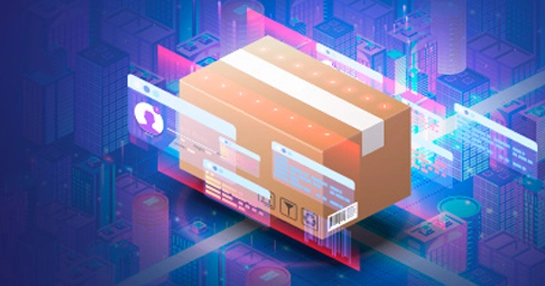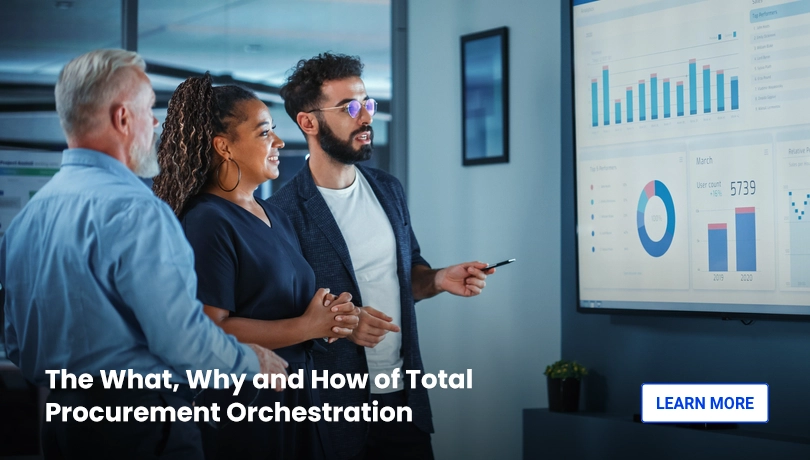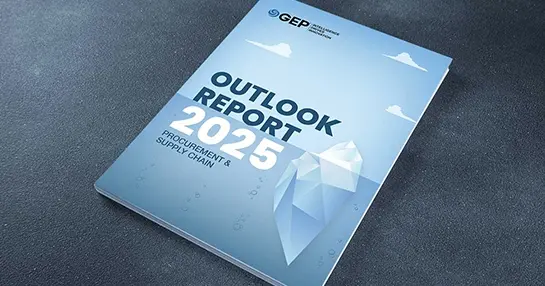The transformation of procurement is in full swing, driven by advancements in AI, cloud technology, mobile, blockchain, big data and quantum computing. GEP SMART™ – the industry’s top cloud-native, unified source-to-pay platform – merges cutting-edge technologies with strategic insights and decades of experience in transforming complex global procurement organizations. The unified procurement software enhances productivity, reduces costs and empowers teams to exceed savings targets and tackle new challenges, propelling procurement into a new era of digital efficiency.
Future-Proof Your Procurement Team With GEP DIGITAL™
GEP’s record of continual digital innovation — including cloud, mobile, touch technologies, consumerized application environments, user-specific workflows and interfaces, and a natively unified digital platform — is matched only by the significant returns we deliver with our digital procurement services.
Digital Disruption
Digital disruption signifies a significant shift in how we think and operate, driven by digital technologies. This shift impacts all aspects of sourcing and procurement, offering opportunities for more efficient operations, happier teams and satisfied customers. GEP, with the right mix of consulting, change management and technology capabilities, guides organizations through this transformative journey, enhancing strategic processes and outcomes
Digital Procurement Transformation
Digital procurement transformation redefines and reorganizes procurement through emerging technologies, creating agile and competitive advantages. This comprehensive overhaul results in significant gains, streamlining operations and transforming both process and organizational outcomes, making new possibilities actionable.
Benefits of Digital Transformation
Key drivers of digital procurement transformation include a unified platform, enhanced user experience, mobility, big data and analytics, artificial intelligence, Internet of Things and a digital supply chain. These elements combine to revolutionize procurement practices, supporting better decision-making and risk management.
Drivers of Digital Transformation
Key drivers of digital procurement transformation include a unified platform, enhanced user experience, mobility, big data and analytics, artificial intelligence, Internet of Things, and a digital supply chain. These elements combine to revolutionize procurement practices, supporting better decision-making and risk management.

Key Capabilities
Frequently Asked Questions
Digital procurement transformation breaks down departmental silos by creating a single source of truth. Enterprises can obtain real-time insights into spending patterns in every department by implementing unified source-to-pay procurement platforms.
The change unifies disparate procurement processes under a single digital roof. Finance can see exactly what marketing is purchasing. Operations can track what IT is purchasing. HR can monitor facilities spending, and so on. And this visibility happens automatically through integrated dashboards that update in real time.
Because the system enforces uniform policies everywhere, control significantly improves. Department heads can't go over budget or circumvent approval processes. Unusual spending is immediately flagged by the platform. Managers automatically get alerts when employees deviate from preferred suppliers or negotiate unauthorized contracts.
GEP SMART can track every transaction from requisition to payment, creating an audit trail that shows who bought what, when, and why. Companies can spot maverick spending instantly and redirect it through proper channels.
GEP's approach targets cost reduction through multiple channels that work simultaneously. E-procurement systems deliver cost reduction, improved spend visibility, higher productivity, enhanced controls by automating manual processes that drain resources.
Supplier relationships are automatically consolidated by the platform. The system finds the top performers and directs all purchases through them, eliminating the need for dozens of office supply vendors. Better terms and prices are made possible by this volume consolidation.
Automation eliminates the hidden costs of manual procurement. Processing purchase orders now takes minutes instead of hours. The matching of invoices becomes automatic. Workflows for approval significantly accelerate. This way, procurement teams get more time to concentrate on strategic tasks like market research and supplier relationship management due to these efficiency improvements.
Strategic CPOs have moved away from a focus on cost reduction and toward value creation because digital tools handle routine tasks. Processing purchase orders now takes minutes instead of hours. The matching of invoices becomes automatic. Workflows for approval significantly accelerate.
Automation serves as the backbone of modern procurement transformation, handling repetitive tasks that once consumed entire teams. Modern procurement transformation relies heavily on automation to handle repetitive tasks that previously took up entire teams. Because automation scales infinitely while human resources do not, the biggest impact is felt by large procurement organizations.
The system automates purchase requisitions, routing them through proper approval chains without human intervention. Contract renewals happen automatically when pre-set conditions are met.
Automated workflows that preserve uniformity throughout international operations are advantageous for large teams. New York procurement teams use the same automated procedures as their London or Mumbai counterparts. Errors that arise when various teams employ disparate approaches are decreased and training overhead is eliminated thanks to this standardization.
Large procurement teams understandably cannot manually check every purchase for policy compliance, but automated systems can review every transaction against established rules and flag exceptions immediately. Furthermore, the predictive capability embedded in the platform enables large teams to stay ahead of problems rather than react to them.
GEP's platform builds compliance monitoring directly into every procurement transaction. Complete and cost-effective control of global AP regulations happens automatically through embedded compliance engines that understand local requirements.
The system keeps up-to-date regulatory libraries for various nations and sectors. For example, the platform would automatically apply EU regulations when a German procurement professional creates a purchase order. Local tax laws would be automatically applied when their Indian colleague processes an invoice.
The platform creates the audit trails that authorities demand. Time stamps, approval records, and justification notes are all included in every transaction. The system produces comprehensive compliance reports in minutes as opposed to weeks when auditors request documentation.
CPOs and CFOs can monitor identified potential savings against realized savings while adhering to regulations thanks to savings and compliance tracking services. When suggested actions might violate regulations, the system warns users and suggests compliant alternatives that accomplish the same goals. Instead of correcting compliance failures after they happen, this proactive approach prevents them.



















